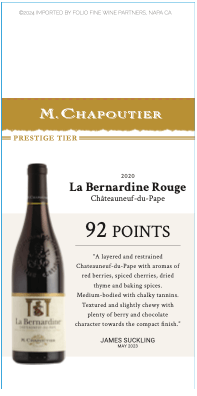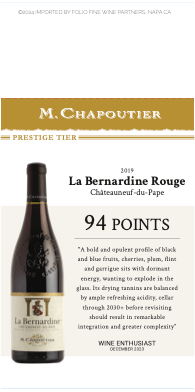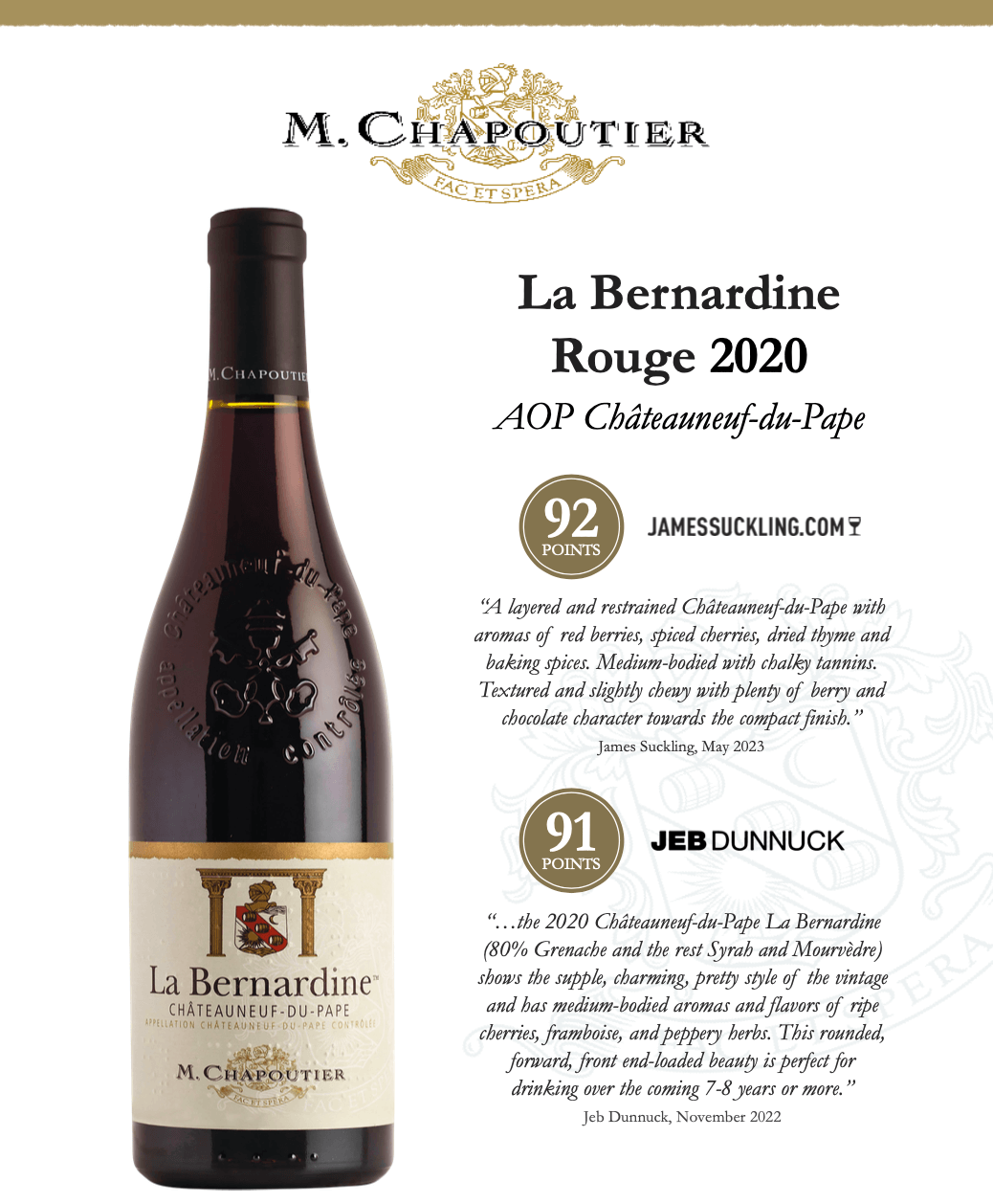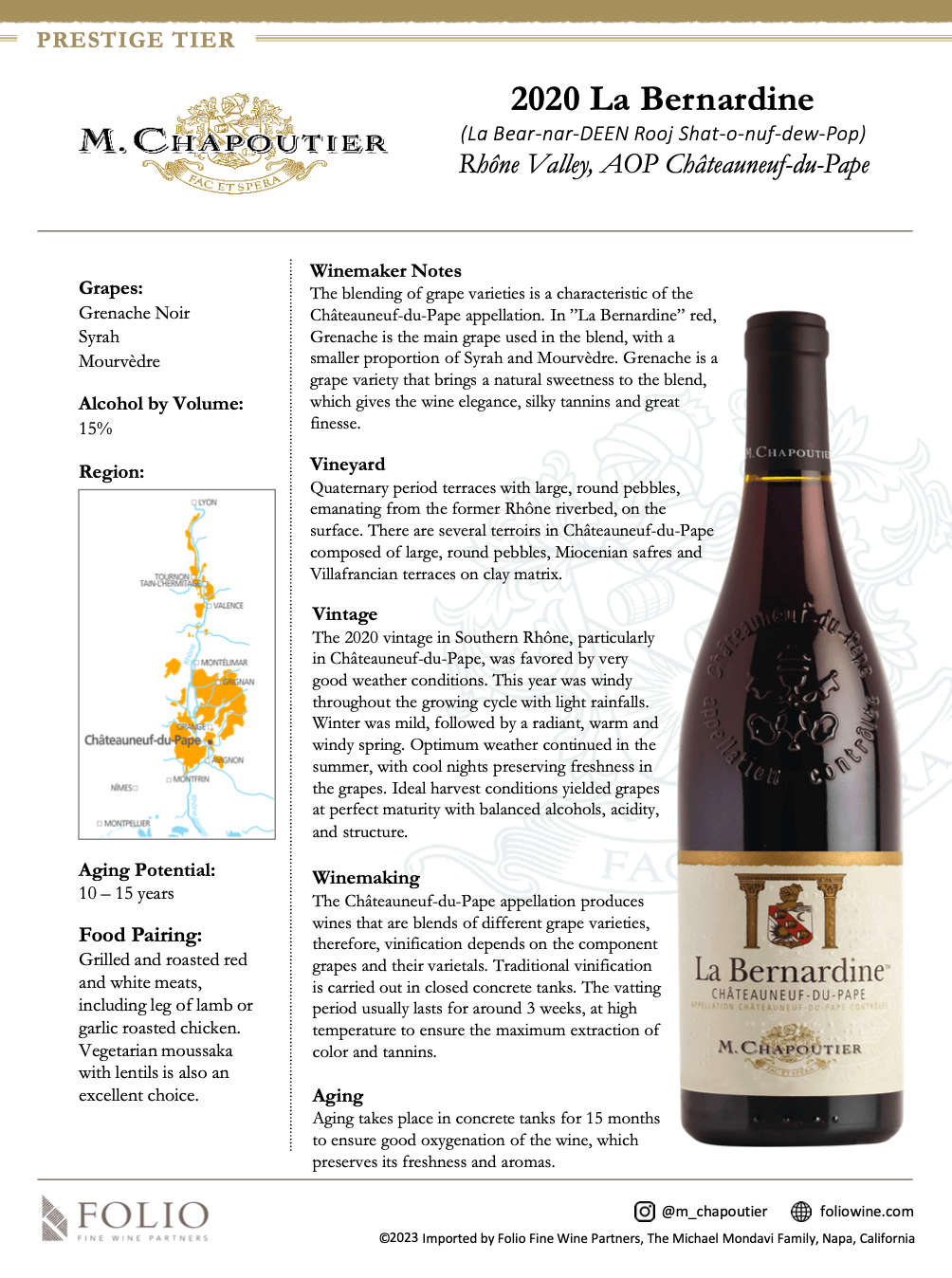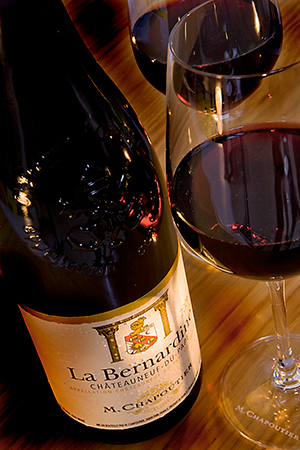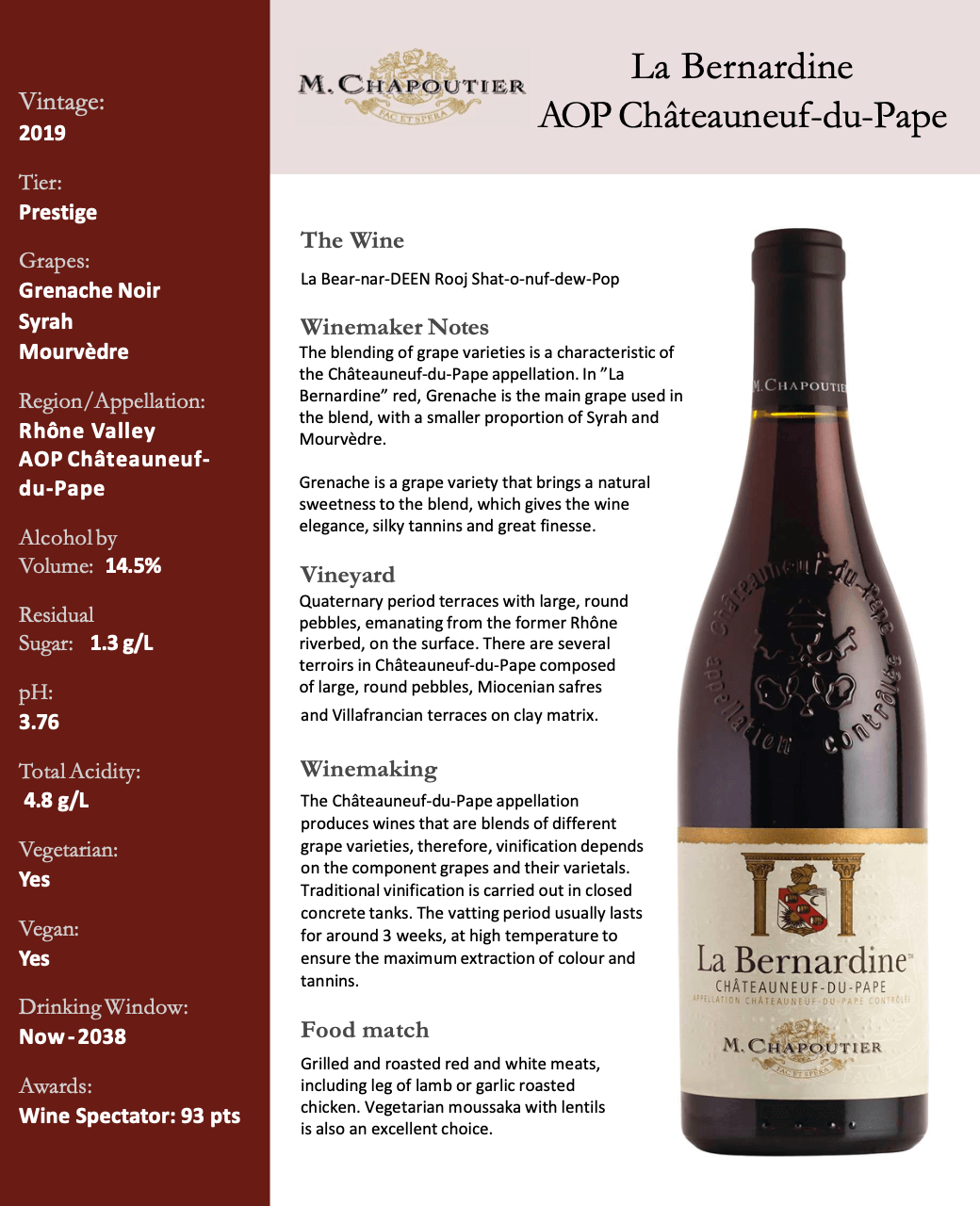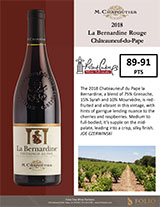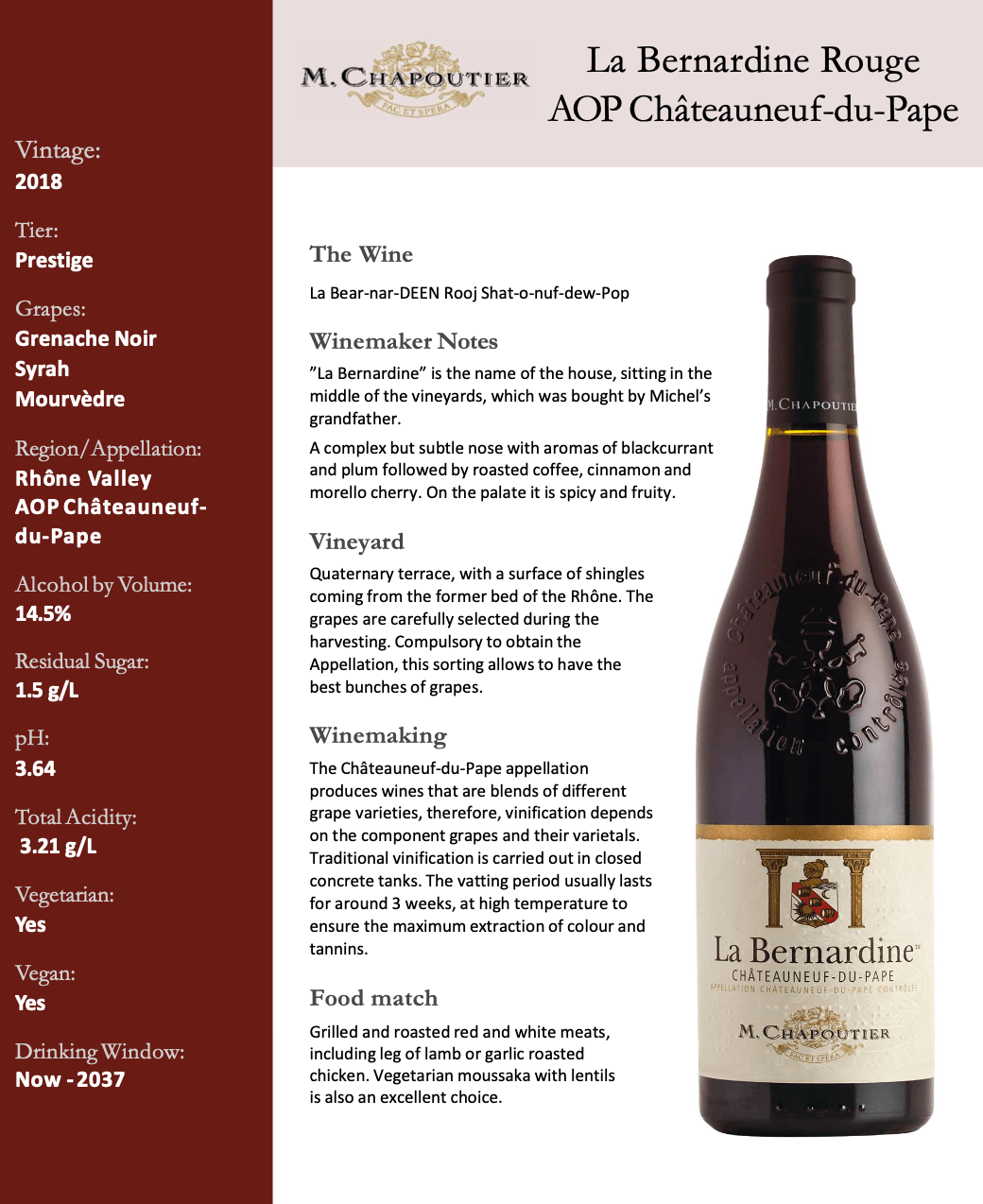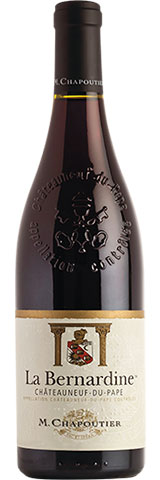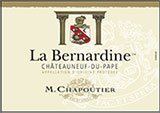


M. Chapoutier La Bernardine Rouge
AOC Châteauneuf-du-Pape, Rhône, France
Tasting Notes
A complex but subtle nose with aromas of blackcurrant and plum followed by roasted coffee, cinnamon and morello cherry. On the palate it is spicy and fruity.
Food Pairings
Grilled and roasted red and white meats, including leg of lamb or garlic roasted chicken. Vegetarian moussaka with lentils is also an excellent choice.
Vintage Notes
The 2020 vintage in Southern Rhône, particularly in Châteauneuf-du-Pape, was favored by very good weather conditions. This year was windy throughout the growing cycle with light rainfalls. Winter was mild, followed by a radiant, warm and windy spring. Optimum weather continued in the summer, with cool nights preserving freshness in the grapes. Ideal harvest conditions yielded grapes at perfect maturity with balanced alcohols, acidity, and structure.
Winemaking Notes
The Châteauneuf-du-Pape appellation produces wines that are blends of different grape varieties, therefore, vinification depends on the component grapes and their varietals. Traditional vinification is carried out in closed concrete tanks. The vatting period usually lasts for around 3 weeks, at high temperature to ensure the maximum extraction of color and tannins.
Vineyard Notes
Quaternary period terraces with large, round pebbles, emanating from the former Rhône riverbed, on the surface. There are several terroirs in Châteauneuf-du-Pape composed of large, round pebbles, Miocenian safres and Villafrancian terraces on clay matrix.
Technical Info
Varietals: Grenache Noir, Syrah, Mourvèdre
Alcohol by Volume: 15%
Aging Potential: 10 – 15 years
Tasting Notes
A complex but subtle nose with aromas of blackcurrant and plum followed by roasted coffee, cinnamon and morello cherry. On the palate it is spicy and fruity.
Food Pairings
Grilled and roasted red and white meats, including leg of lamb or garlic roasted chicken. Vegetarian moussaka with lentils is also an excellent choice.
Harvest Notes
Alcohol by Volume: 14.5%
Residual Sugar: 1.3 g/L
pH: 3.76
Total Acidity: 4.8 g/L
Winemaking Notes
The Châteauneuf-du-Pape appellation produces wines that are blends of different grape varieties, therefore, vinification depends on the component grapes and their varietals. Traditional vinification is carried out in closed concrete tanks. The vatting period usually lasts for around 3 weeks, at high temperature to ensure the maximum extraction of colour and tannins.
Vineyard Notes
Quaternary period terraces with large, round pebbles, emanating from the former Rhône riverbed, on the surface. There are several terroirs in Châteauneuf-du-Pape composed of large, round pebbles, Miocenian safres and Villafrancian terraces on clay matrix.
Tasting Notes
A complex but subtle nose with aromas of blackcurrant and plum followed by roasted coffee, cinnamon and morello cherry. On the palate it is spicy and fruity.
Food Pairings
Grilled and roasted red and white meats, including leg of lamb or garlic roasted chicken. Vegetarian moussaka with lentils is also an excellent choice.
Harvest Notes
Alcohol by Volume: 15%
Residual Sugar: 1.5 g/L
pH: 3.64
Total Acidity: 3.21 g/L
Winemaking Notes
The Châteauneuf-du-Pape appellation produces wines that are blends of different grape varieties, therefore, vinification depends on the component grapes and their varietals. Traditional vinification is carried out in closed concrete tanks. The vatting period usually lasts for around 3 weeks, at high temperature to ensure the maximum extraction of colour and tannins.
Vineyard Notes
Quaternary terrace, with a surface of shingles coming from the former bed of the Rhône. The grapes are carefully selected during the harvesting. Compulsory to obtain the Appellation, this sorting allows to have the best bunches of grapes.
 Back To Menu
Back To Menu

